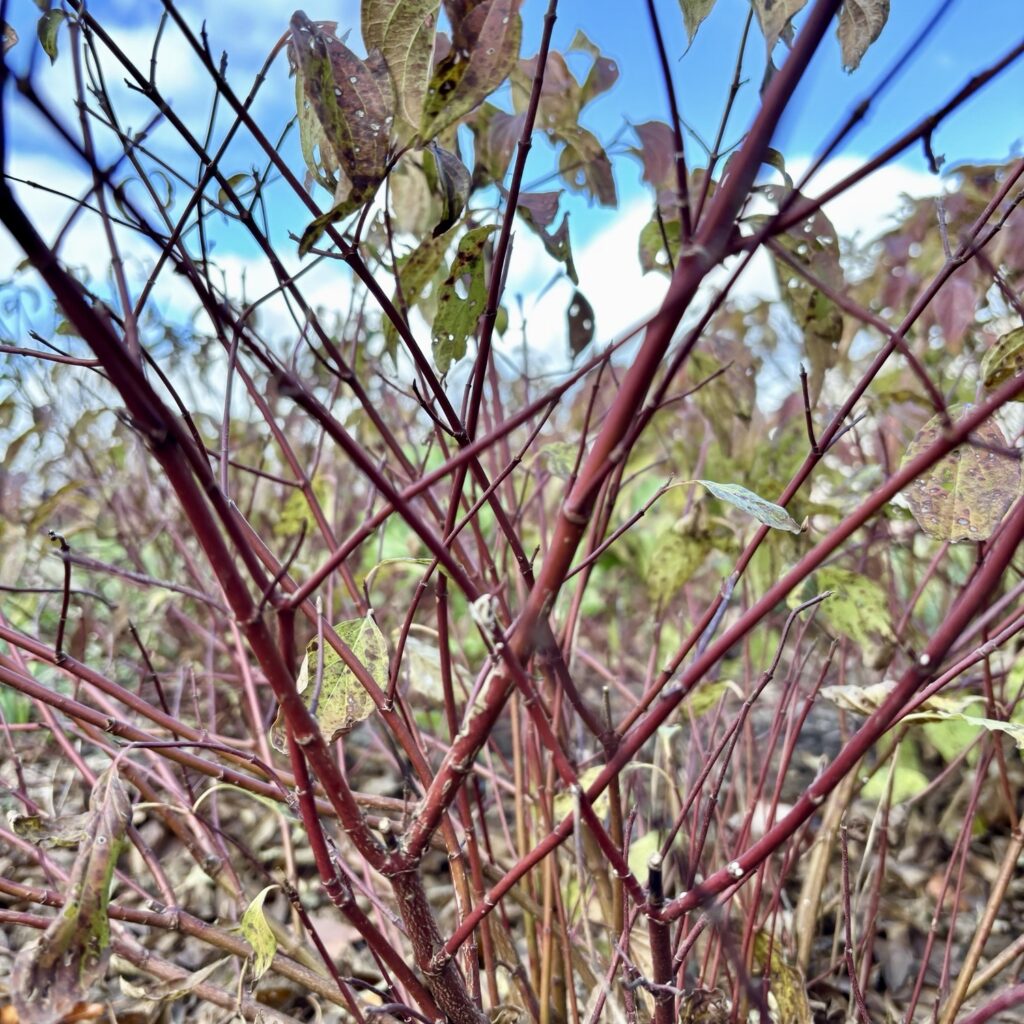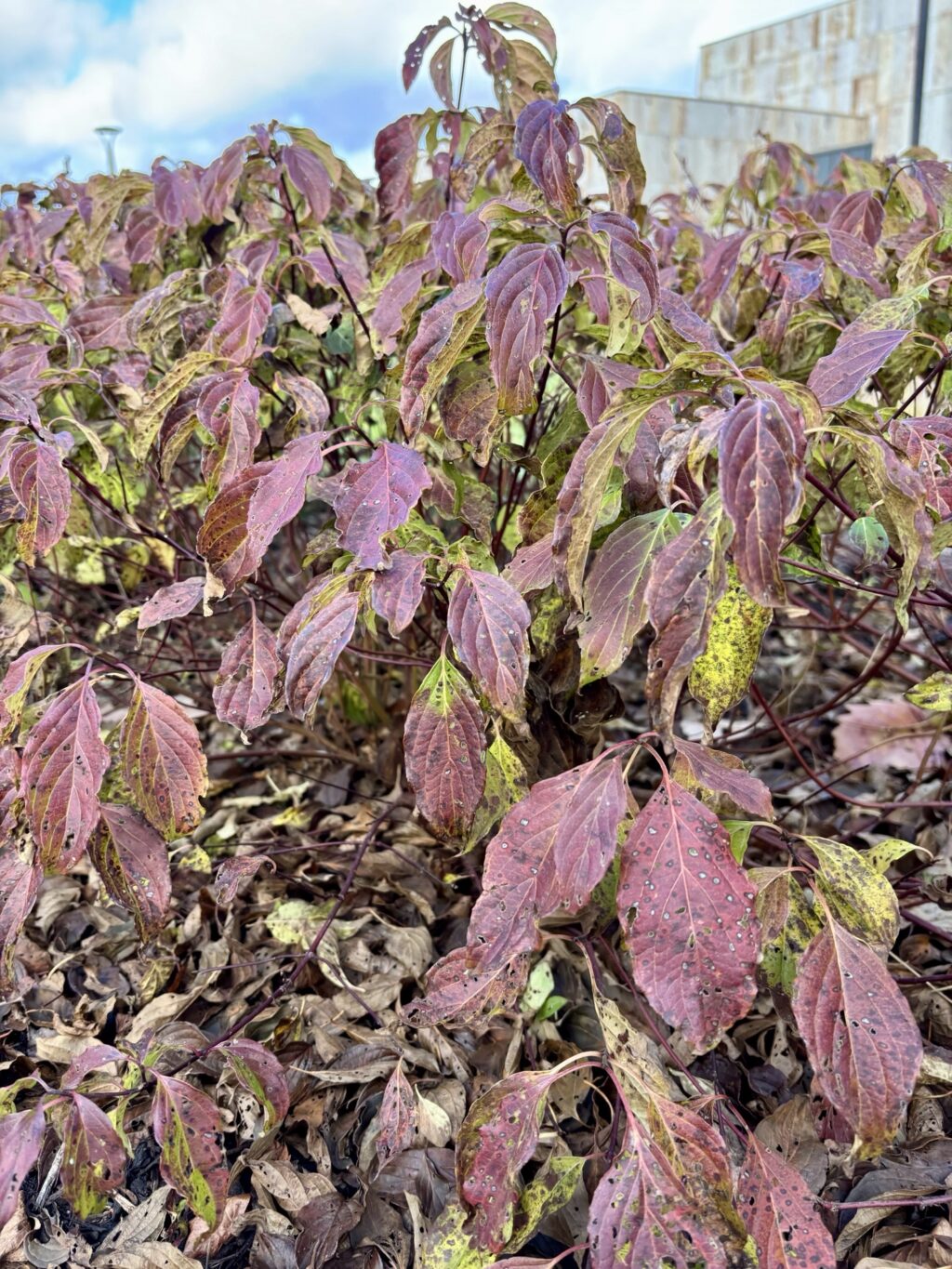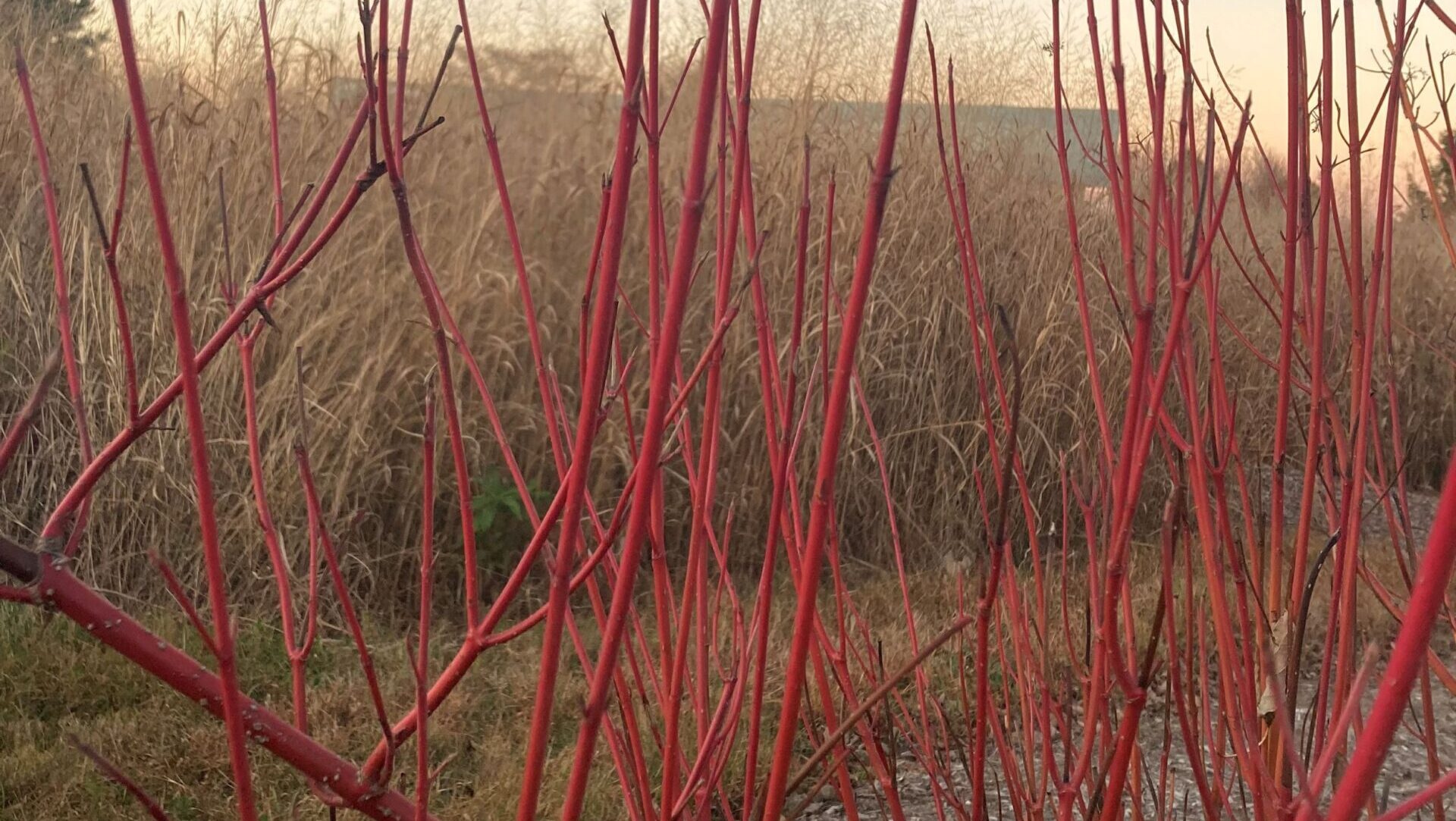
As the autumn leaves fall and the vibrant foliage fades, few plants will stand out in the gray of winter. One such plant is Cornus sericea, commonly known as the red-twig dogwood or red-osier dogwood. This multi-stemmed, upright, deciduous shrub, typically reaching 6–9 feet in height, is native to most of North America (except parts of the midwest and southern United States), and displays leaves in a range of colors throughout the year. In spring and summer (typically May to June), the leaves are green with clusters of small, but fragrant, flat-topped white flowers. These flowers eventually give way to whitish-blue fruits that are quite attractive to birds and ornamental in their own right. In the fall, the stems turn shades of red and orange, eventually deepening to purple. But come late fall and winter, the dogwood sheds its leaves and enters its most striking form, as its thick stems turn a vivid red or sometimes yellow, standing out against a snowy backdrop.
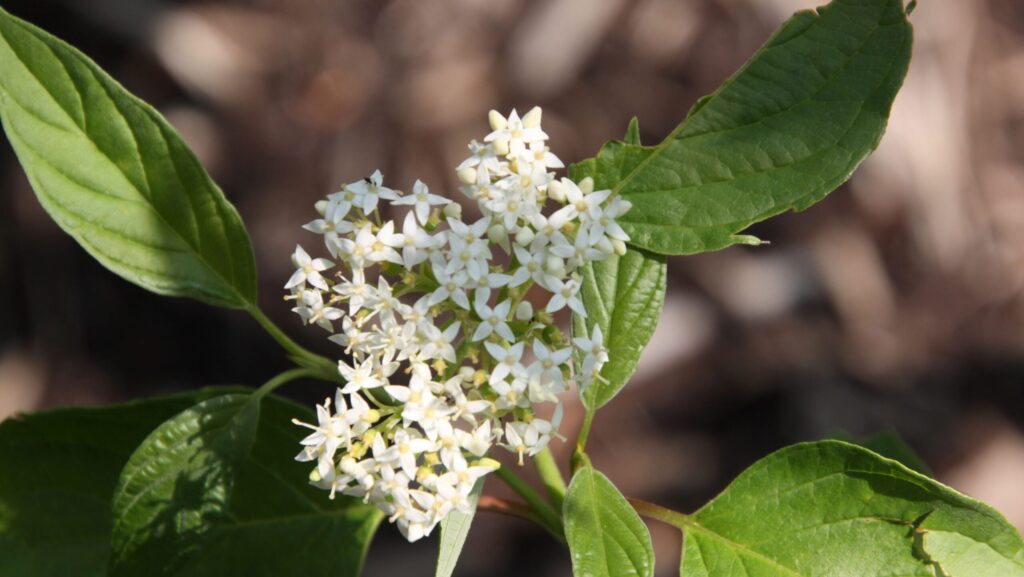
The Arboretum at Penn State showcases multiple specimens of Cornus sericea, as well as four of its cultivars. In the Strolling Gardens, C. sericea ‘Baileyi’ exhibit the same leaf-color progression, but features deep purple stems in the winter. ‘Cardinal,’ found in the Childhood’s Gate Children’s Garden and Marsh Meadows, appear brighter than most, featuring a bold coral-red color in the winter. Also located in the children’s garden, the ‘Flaviramea,’ commonly known as the yellow-twig dogwood, reveal golden stems in winter. Finally, the smallest of the group, ‘Kelseyi,’ are found in the Strolling Gardens. This cultivar has very slender branches compared to the others and turns red and purple in the winter.
Cornus sericea is hardy in USDA zones 3–8 and is very adaptable to various environments, but thrives best in rich, fertile soils. You might want to weigh your options when planting in zones 7 and 8 however, as these plants are more vulnerable to certain diseases, such as canker, as the climate becomes hot and muggy. The root systems of these shrubs grow rapidly and can send multiple branches up from the ground in a process known as suckering. For this reason, it is recommended not to plant them too close to a house or other plants. It is also recommended to trim roots and remove suckers in a timely manner to discourage spread. Pruning is not always necessary, but by removing some of the oldest stems in early spring, one can encourage new growth, which will manifest in the best color.
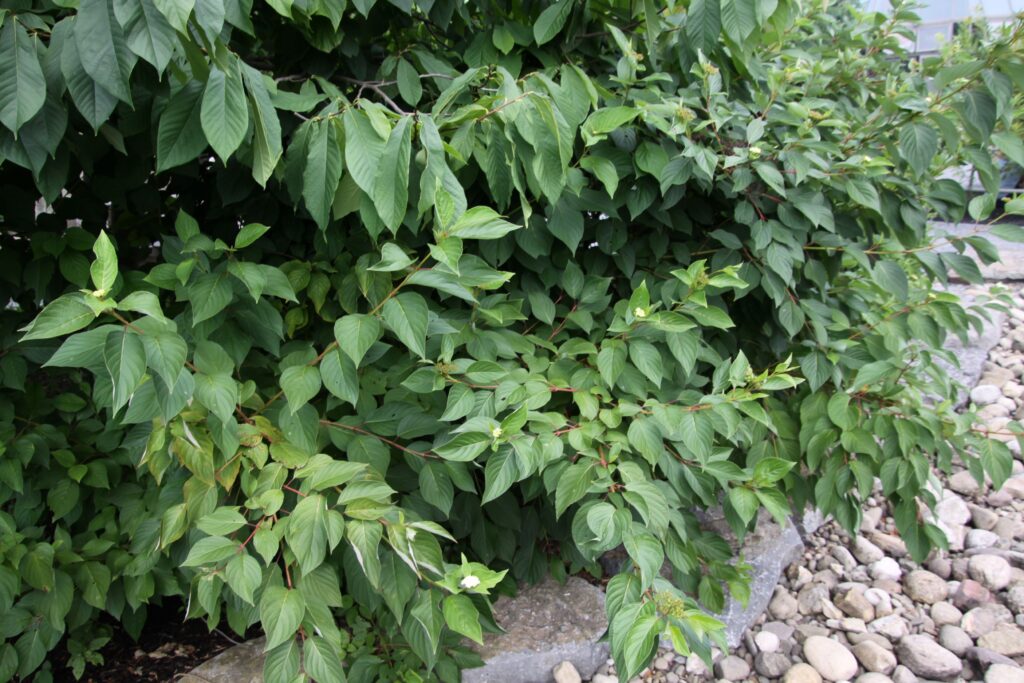
The red-osier dogwood was also traditionally used by Native American tribes. Its bark was applied medicinally for treating open wounds and staunching bleeding and was also used to create rope, cordage, and a red dye. The globose white berries produced by these dogwoods are edible, though often too bitter to enjoy alone; they are usually mixed with other fruits or dried.
So, when the last of the autumnal palate fades, just know there is still much to see in the gardens, and Cornus sericea is only one of the many species about to light up the winter! You can find our dogwoods throughout the gardens and can always locate them by searching our Arboretum Explorer Tool.
